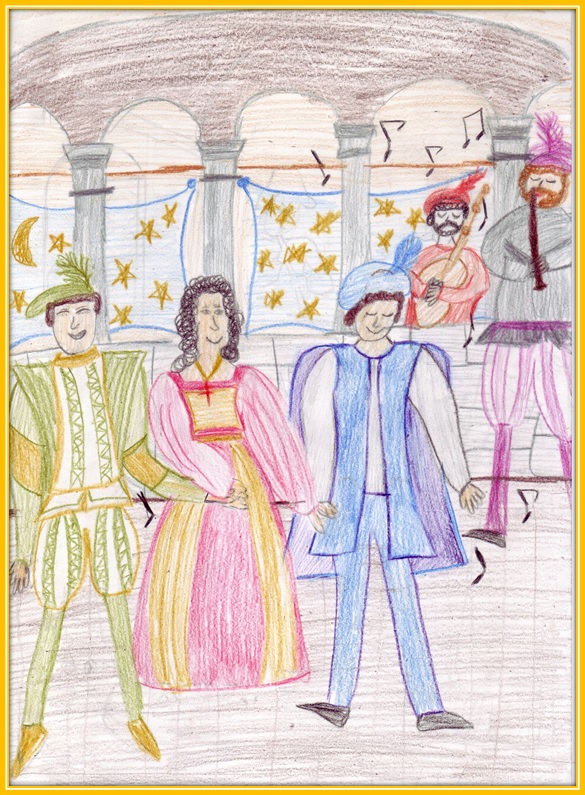DANCING
Renaissance dances
 Although there were dances before the Renaissance, it was in this period when they gained importance as they became one of the most important forms of entertainment in court and palaces.
Although there were dances before the Renaissance, it was in this period when they gained importance as they became one of the most important forms of entertainment in court and palaces.
It was also the time when the first dance learning manuals were written and some are still preserved.
It was so important for noblemen to learn how to dance that they turned to professional masters to prepare the dances.
Dances were very varied: slow and elegant like the pavane, or fast and lively like the galliard.
Some of them had fixed choreographies and in others it was possible to improvise.
They could be danced in pairs, groups and even in circles like the branle.
Let´s dance a pavane
We are going to travel in a time machine and wear our best clothes to attend a ball in a great Renaissance castle. To enjoy the party we have to learn a choreography and try to be the best dancers. Are you ready?
We are going to dance a pavane, a slow dance from Italy, normally in 2/4 or 4/4 time. The origin of the name pavane is unknown but there are two possible options: from padovani, coming from Padua (Italian city) or from turkey (pavo), referring to the elegant movements of this bird similar to those in the dance. Which one do you think is the most accurate?
The dance steps to follow in a pavan are:
- 1st step: make pairs and place yourselves in lines, one behind the other.
- 2nd step: look at the other person, one opposite the other and greet them, first men, then women, and go back to the front. Hold hands.
- 3rd step: we move forward with the following pattern:
- right (long), left (long), right-left-right (short), rest.
- left (long), right (long), left-right-left (short), rest.
- 4th step: look at each other from opposite positions, and repeat the same pattern towards the sides with the following change:
- right (long) left (long), right-left-right (do these three steps turning around yourselves), rest
- left (long), right (long), left-right-left (do these three steps turning around yourselves), rest
- 5th step: repeat step 4 but do the steps forward, cross your partner in the middle, and end up on the other side.
- 6th step: place opposite one another and hold hands, do step 3 but walking backwards.
- 7th step: to finish, do step 2 again, the greetings.
Help yourselves with this video!
Licensed under the Creative Commons Attribution Non-commercial Share Alike License 4.0